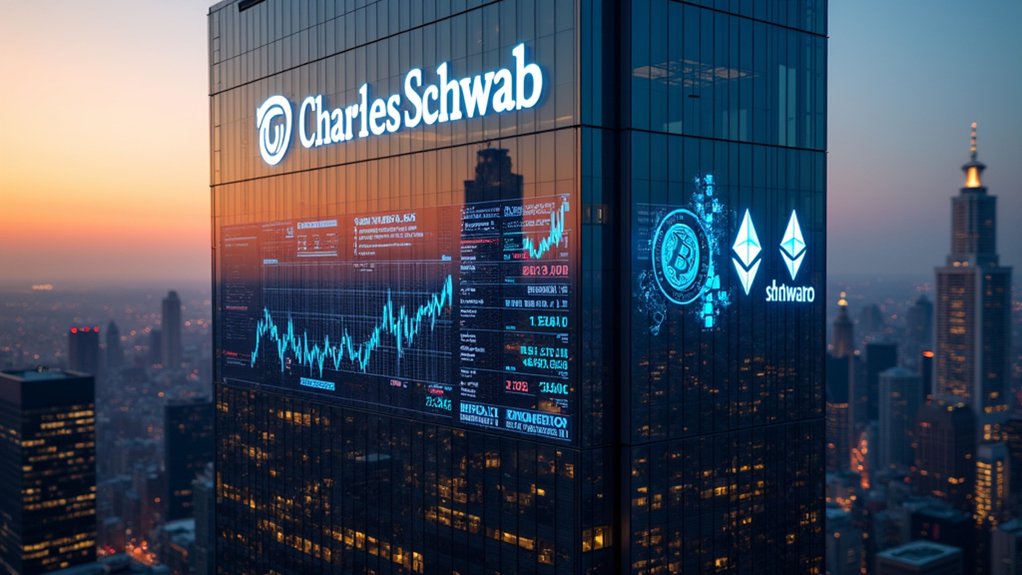AVAX is the main cryptocurrency of the Avalanche blockchain network, launched in 2020 by Ava Labs. It's built to handle fast transactions and solve common blockchain problems like slow speeds and high costs. The network can process over 4,500 transactions per second using three connected blockchains. AVAX tokens are used for paying fees, staking, and making decisions about the network's future. There's much more to discover about AVAX's growing ecosystem.

AVAX is the native cryptocurrency that powers the Avalanche blockchain network. Launched in 2020 by Ava Labs, AVAX plays a vital role in the platform's operations, including transaction fees, staking, and governance. The platform was created to solve common blockchain problems, particularly those related to speed and scalability, through its unique Avalanche consensus mechanism. Users can use AVAX for transaction fees when executing trades or smart contracts on the network.
The Avalanche network operates using three interconnected blockchains: X-Chain, C-Chain, and P-Chain, each serving different purposes. It's built on a Proof-of-Stake system, which means users can earn rewards by staking their AVAX tokens to help secure the network. The platform can handle more than 4,500 transactions per second, making it considerably faster than many other blockchain networks. The platform was developed by a team including software engineer Sirer, who played a key role in its creation.
It's also compatible with the Ethereum Virtual Machine, allowing developers to easily create and deploy smart contracts and decentralized applications. The platform achieves remarkable efficiency with fast finality in just one second.
AVAX has a fixed maximum supply of 720 million tokens, and it's designed to be deflationary, which means tokens are regularly burned through network transactions. To become a validator on the network, users need to stake 2,000 AVAX tokens. The cryptocurrency is widely available on major trading platforms, where investors can buy and sell it just like other digital currencies.
One of AVAX's standout features is its ability to create Subnets, which are custom blockchains that can be tailored for specific uses. This has made it popular in various industries, from gaming to decentralized finance (DeFi). The platform's fast transaction speeds and low costs have attracted developers who want to build applications for trading, lending, and creating non-fungible tokens (NFTs).
The Avalanche ecosystem continues to grow through partnerships and integrations with other blockchain projects and traditional businesses. Its focus on scalability and efficiency has made it an attractive option for developers who need to build high-performance applications.
The platform's ability to process transactions quickly while maintaining security has helped it gain recognition in the blockchain industry. As the network expands, AVAX remains central to its operation, facilitating everything from network security to governance decisions that shape the platform's future.
Frequently Asked Questions
How Can I Stake AVAX Tokens to Earn Passive Income?
AVAX tokens can be staked in several ways to earn passive income.
Investors can delegate 25 or more AVAX to existing validators through the Avalanche wallet on the P-Chain. They can also stake through crypto exchanges or use liquid staking platforms like BENQI.
Those with 2,000+ AVAX can run their own validator node.
Staking periods range from 2 weeks to 1 year, with average rewards around 7.67% APY.
What Are the Minimum System Requirements to Run an Avalanche Validator Node?
Running an Avalanche validator node requires specific hardware and software.
The system needs 8 AWS vCPU-equivalent processing power, 16 GiB of RAM, and 1 TiB SSD storage. It must run on Ubuntu 20.04 or MacOS 12 or higher.
The network needs a reliable internet connection with 5Mbps bandwidth and port 9651 open.
There's also a financial requirement – validators must stake 2,000 AVAX tokens to participate.
Where Can I Safely Store My AVAX Tokens?
AVAX tokens can be stored in several secure places.
Hardware wallets like Ledger and Trezor offer offline storage with strong security.
Software wallets, including the official Avalanche wallet, provide convenient access through web browsers or apps.
Exchange wallets on platforms like Binance and Coinbase are available for active traders.
Cold storage methods, such as paper wallets and metal seed storage devices, exist for long-term holding.
Which Decentralized Applications Are Most Popular on the Avalanche Network?
The most popular dapps on Avalanche are centered around trading and earning.
Trader Joe stands out as the network's largest decentralized exchange with over $4 billion in total value locked.
Other widely used platforms include BENQI for lending and borrowing, and Yield Yak for automated yield farming.
GMX has gained traction for crypto trading with leverage, while platforms like Aave and WOOFi offer additional trading and lending options.
How Does AVAX Compare to Ethereum in Terms of Transaction Fees?
AVAX transaction fees are generally much lower than Ethereum's, typically costing between $0.01 to $0.08 per transaction.
Ethereum's fees can range from less than a penny to over $100, depending on network traffic.
AVAX fees are more stable and predictable, making them better for small transactions.
While both networks burn fees, AVAX burns 100% of fees while Ethereum only burns a portion.
AVAX's higher processing speed also helps keep fees low.





